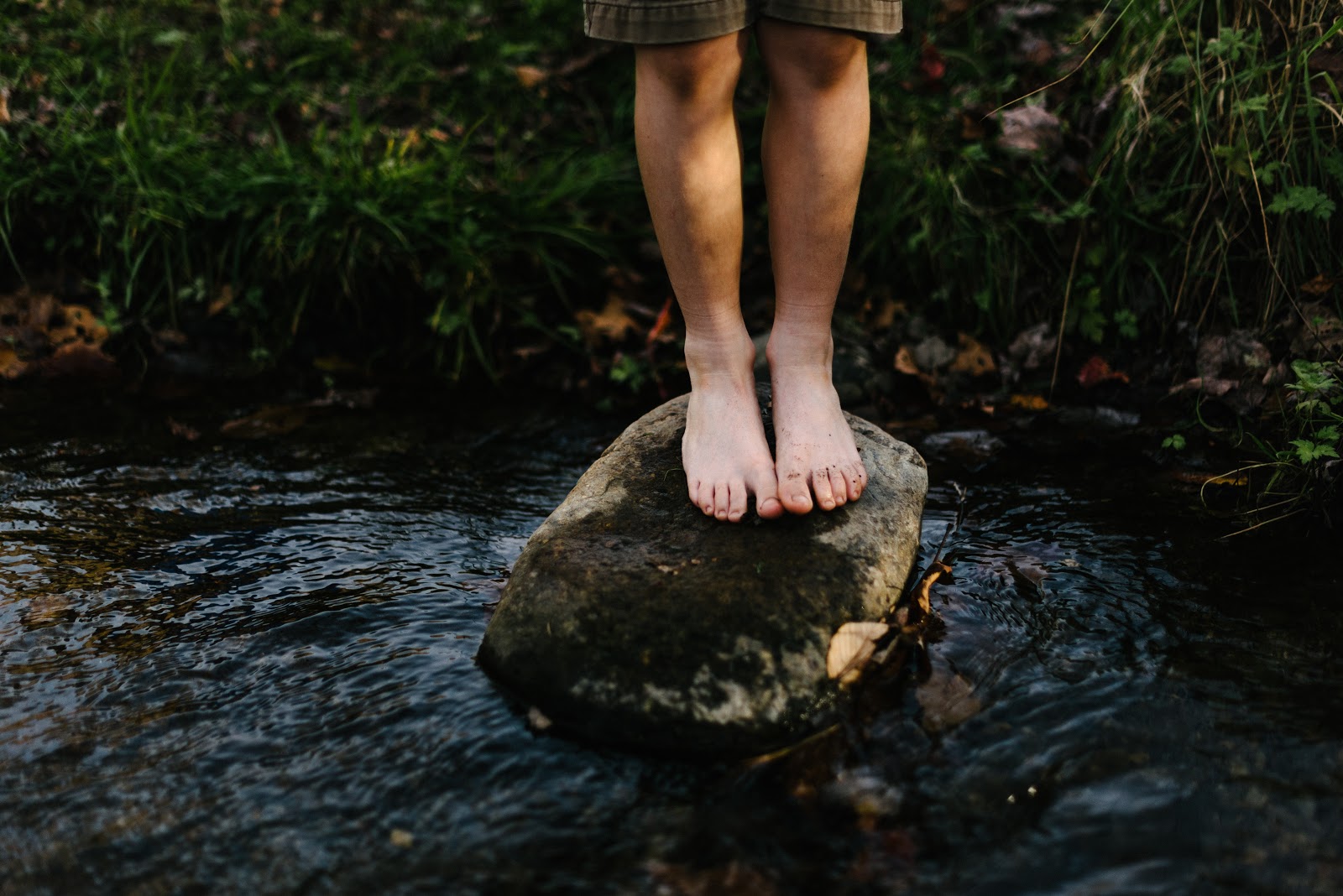Ankles
I have discussed the foot and the knee. Between the two you have the ankle. The ankle helps the foot and knee adapt to uneven surfaces that you may walk on and allow you to align the body. The actual range of motion of the ankle is not very large because it is there to stabilize the base of the body (the foot). When the ankles are weak and the foot does not have a strong base, like an uneven surface, the ankle keeps the foot steady. If the ankle has no flexibility the foot can not adapt as well.

I never really thought of stabilizing muscles as needing much help but if you do not keep muscles working they get weak. Wearing shoes takes some of the work of the ankle mobility. Shoes make the surface your foot rests on level on the sole of the foot, giving the ankles less to do. If you ever skied or worn shoes that have a tight ankle portion you may have some idea of how having the ankle still can affect your gait and the mobility of the muscles of the leg.
So with little range of motion, what do you do with the foot? First of all, you want to maintain the range that you currently have. The movement of the ankle joint is tied in with the movement of the foot and the muscles of the leg. The basic range of motion is pointing the toes, which stretches the top of the ankle, lengthens the muscles of the top of the foot and the front of the shin. Bringing the toes toward you (referred to as flexing) lengthens the muscles of the calf and up the leg to the hamstrings. It also stretches the back of the ankle. It is not important how much it moves, only that you want to maintain as much comfortable movement as possible. This movement is more than just flopping the feet forward and back. When you flex the foot bring ALL the toes toward you so you get the muscles on the sole of the foot to lengthen. The same thing for when you point; move fully.
Circling the ankles, see how much movement you can get at all the angles. Notice differences between the two feet. You can also bring the soles of the feet together (supponation) and then bring the toes and soles of the feet away from each other (pronation).
Now strengthening the ankles requires you put some weight on the ankles to challenge them to work against some resistance, like a strap or stretch band. Pressing the ball of the foot into the strap or band requires the muscles of the ankles to work. You can provide resistance in a variety of positions to get the muscles stronger.
From there you get up on your feet and you can do strengthening moves through the day. Balancing on one foot requires a lot of work from your ankle. Your foot stabilizes and the muscles that support the ankles, calves, shins and thighs are helping to maintain your balance. Then come up on the balls of the feet either standing in the middle of the room or with the hands at the wall. (The intention of coming up on the balls of the feet is for the ankles, so your balance does not need to come into it.) Are your ankles wobbly? There is nothing wrong with that but take note of what this is telling you. Lifting and lowering your heels helps builds stability over time.
Photo by Jordan Whitt on Unsplash
Recent blog posts
Discovery
DiscoveryThink of your life as a path of discovery. Even challenging...
One mindful step forward at a time will get you where you are going.
One mindful step forward at a time will get you where you are going. How...
Comfort in times of uncertainty
Comfort in times of uncertainty The current times get me feeling hopeless...


